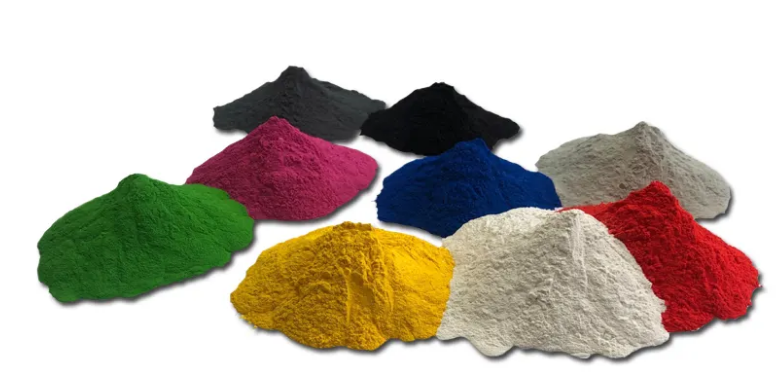In simple terms, thermosetting means that heating can cure the cross-linked, cross-linked coating is not melting and insoluble, there are chemical reactions in the heating process.
Thermoplasticity refers to the softening of the powder after heating, but not crosslinking, heating process only physical changes without chemical reactions.
Specific performance differences are as follows.
Thermoplastic powder coating powder, melt at spraying temperature, solidifies into film when cooled.

Due to the simple processing and spraying method, the powder coating powder only needs heating melting, leveling, cooling or extraction solidification into film, no complex curing device is needed.
Most of the raw materials used are common polymers on the market, which can meet the performance requirements under most conditions.
But there are also some shortcomings, such as high melting temperature, low coloring level, poor adhesion to the metal surface.
Thermosetting powder coating powder refers to the thermosetting resin as film forming material, adding the curing agent of crosslinking reaction after heating can form insoluble and insoluble hard coating.
No matter how high the temperature, the coating will not soften like the thermoplastic coating, but can only decompose.
Because the resin used in thermosetting powder coating powder is prepolymer with low degree of polymerization and low molecular weight, so the leveling property of the coating is good, with good decoration, and the prepolymer with low molecular weight can form a network of cross-linked macromolecules after curing, so the coating has good anti-corrosion and mechanical properties.
Therefore, the development of thermosetting powder coating powder is particularly rapid.